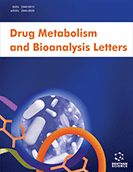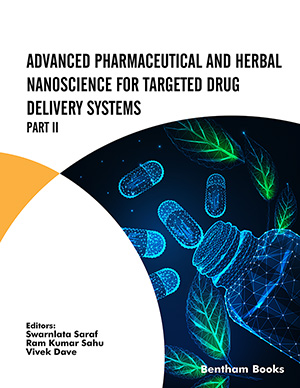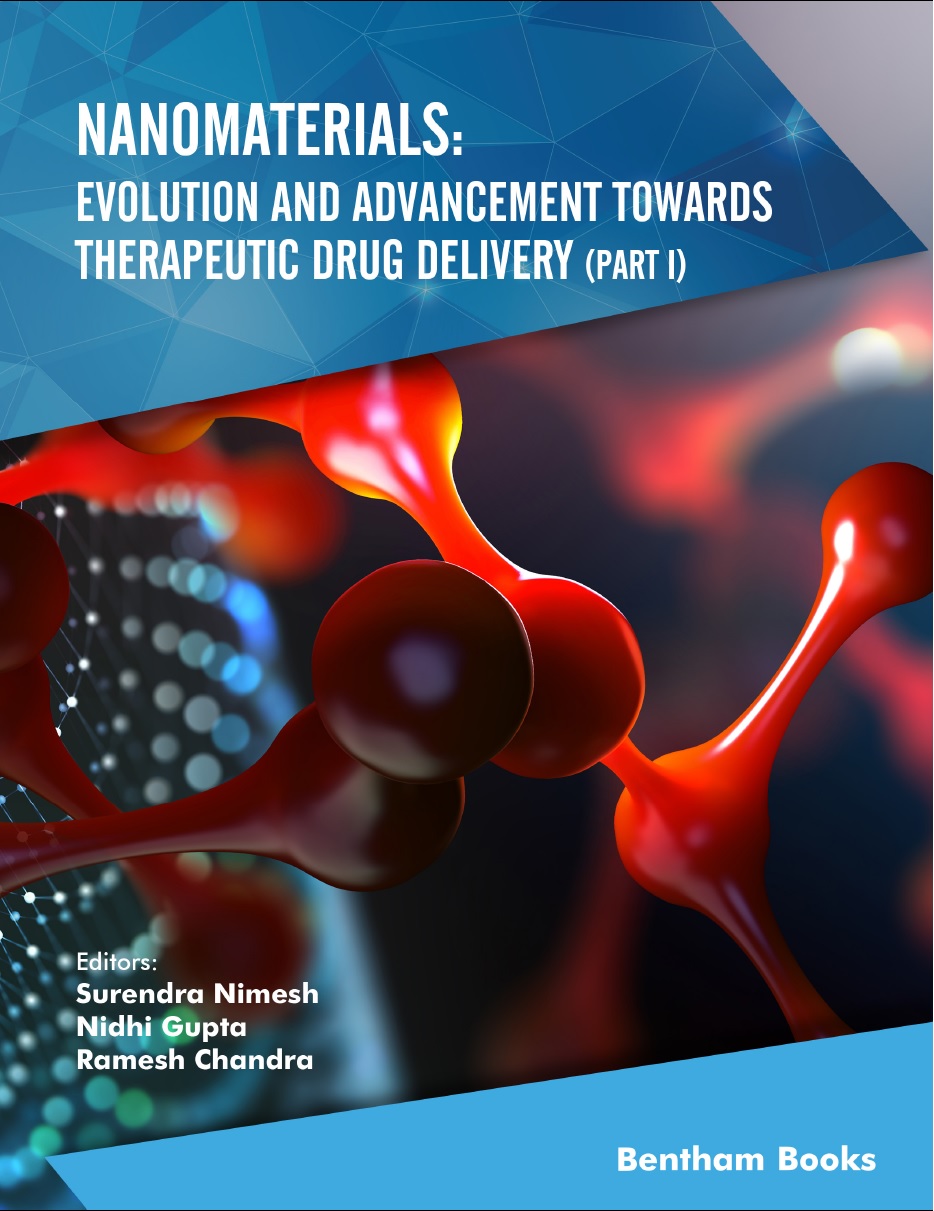Abstract
ATP-binding cassette (ABC) transporters play a critical role in protecting vital organs such as the brain and placenta against xenobiotics, as well as in modulating the pharmacological and toxicological profile of several drug candidates by restricting their penetration through cellular and tissue barriers. This review paper describes the structure and function of ABC transporters as well as the role of P-glycoprotein, multidrug resistance-associated protein 2 and breast cancer resistance protein in the disposition of drugs. Furthermore, a review of the in vitro and in vivo techniques for evaluating the interaction between drugs and ABC transporters is provided.
Keywords: P-glycoprotein, multidrug resistance-associated protein 2, breast cancer resistance protein, drug development, pharmacokinetics, pharmacodynamics.
[http://dx.doi.org/10.1016/j.dmpk.2018.09.208]
[http://dx.doi.org/10.1080/03602532.2021.1909614] [PMID: 33962522]
[http://dx.doi.org/10.1080/00498254.2021.1943566] [PMID: 34187286]
[http://dx.doi.org/10.1002/rcm.8540] [PMID: 31351020]
[http://dx.doi.org/10.3109/03602532.2014.882353] [PMID: 24483608]
[http://dx.doi.org/10.1007/s00424-003-1168-y] [PMID: 14579113]
[http://dx.doi.org/10.1007/s00424-003-1089-9] [PMID: 12883891]
[http://dx.doi.org/10.1080/00498250110060969] [PMID: 11569523]
[http://dx.doi.org/10.1146/annurev.biochem.71.102301.093055] [PMID: 12045106]
[http://dx.doi.org/10.5414/CPP38069] [PMID: 10706193]
[http://dx.doi.org/10.1016/j.tips.2004.06.002] [PMID: 15276711]
[http://dx.doi.org/10.1016/S0169-409X(02)00169-2] [PMID: 12535572]
[http://dx.doi.org/10.1007/s00018-003-3336-9] [PMID: 15052411]
[http://dx.doi.org/10.2174/1567201043480036] [PMID: 16305368]
[http://dx.doi.org/10.1074/jbc.M211758200] [PMID: 12501241]
[http://dx.doi.org/10.1016/j.drudis.2007.12.010] [PMID: 18468555]
[http://dx.doi.org/10.1038/nrd3028] [PMID: 20190787]
[http://dx.doi.org/10.1080/00498250600861751] [PMID: 17118916]
[http://dx.doi.org/10.1177/38.9.1974900] [PMID: 1974900]
[http://dx.doi.org/10.1073/pnas.84.21.7735] [PMID: 2444983]
[http://dx.doi.org/10.1016/S0928-0987(00)00177-9] [PMID: 11121731]
[http://dx.doi.org/10.1124/jpet.103.056960] [PMID: 14534356]
[http://dx.doi.org/10.1074/jbc.C300073200] [PMID: 12609990]
[http://dx.doi.org/10.1006/jmbi.1994.1013] [PMID: 7904655]
[http://dx.doi.org/10.1038/sj.clpt.6100052] [PMID: 17259950]
[http://dx.doi.org/10.1080/10915810600746023] [PMID: 16815813]
[http://dx.doi.org/10.1111/j.1349-7006.2007.00538.x] [PMID: 17608770]
[http://dx.doi.org/10.1124/pr.107.07109] [PMID: 18560012]
[http://dx.doi.org/10.1021/mp0500871] [PMID: 16686365]
[http://dx.doi.org/10.1080/00498250701867889] [PMID: 18668431]
[http://dx.doi.org/10.2174/138920111795164057] [PMID: 21118087]
[http://dx.doi.org/10.1111/j.1476-5381.2009.00336.x] [PMID: 19788499]
[http://dx.doi.org/10.1159/000020510] [PMID: 9567214]
[http://dx.doi.org/10.1016/0092-8674(94)90212-7] [PMID: 7910522]
[PMID: 3592367]
[PMID: 6688617]
[PMID: 2729723]
[http://dx.doi.org/10.1097/00008571-200111000-00012] [PMID: 11692082]
[http://dx.doi.org/10.1016/S0014-2999(02)02955-2] [PMID: 12559367]
[http://dx.doi.org/10.1517/17425247.2.4.683] [PMID: 16296794]
[http://dx.doi.org/10.2174/138161211797440212] [PMID: 21827408]
[http://dx.doi.org/10.2174/138920008784746391] [PMID: 18537576]
[http://dx.doi.org/10.1007/BF00873229] [PMID: 7960599]
[http://dx.doi.org/10.2174/15680096113139990076] [PMID: 23369096]
[http://dx.doi.org/10.2174/187152013804487380] [PMID: 22931413]
[http://dx.doi.org/10.1002/med.20239] [PMID: 21374643]
[http://dx.doi.org/10.1080/03602530600727947] [PMID: 16877258]
[http://dx.doi.org/10.1073/pnas.95.26.15665] [PMID: 9861027]
[http://dx.doi.org/10.1016/j.addr.2008.11.003] [PMID: 19135109]
[http://dx.doi.org/10.1016/S0006-8993(03)02401-6] [PMID: 12706238]
[http://dx.doi.org/10.1016/j.canlet.2005.04.024] [PMID: 15990223]
[http://dx.doi.org/10.1038/sj.ki.5002645] [PMID: 17978814]
[PMID: 11309308]
[http://dx.doi.org/10.1016/j.tips.2005.11.007] [PMID: 16337280]
[http://dx.doi.org/10.1016/j.addr.2008.08.007] [PMID: 19118589]
[http://dx.doi.org/10.1242/jcs.113.11.2011] [PMID: 10806112]
[http://dx.doi.org/10.1200/JCO.2002.12.116] [PMID: 12089223]
[http://dx.doi.org/10.1158/1078-0432.CCR-06-2414] [PMID: 17545533]
[http://dx.doi.org/10.1200/JCO.2008.19.6642] [PMID: 19687340]
[http://dx.doi.org/10.1208/aapsj070112] [PMID: 16146333]
[http://dx.doi.org/10.1007/978-3-642-14541-4_9] [PMID: 21103975]
[http://dx.doi.org/10.1038/sj.onc.1206953] [PMID: 14576857]
[http://dx.doi.org/10.1007/s00424-006-0109-y] [PMID: 16847695]
[http://dx.doi.org/10.1517/17425255.2.3.351] [PMID: 16863439]
[http://dx.doi.org/10.1007/978-3-642-14541-4_8] [PMID: 21103974]
[http://dx.doi.org/10.1046/j.1365-2559.2002.01403.x] [PMID: 12121239]
[PMID: 10220572]
[http://dx.doi.org/10.1111/j.1432-1033.1994.tb18661.x] [PMID: 8125120]
[http://dx.doi.org/10.1042/bj3270305] [PMID: 9355767]
[http://dx.doi.org/10.1002/hep.510300220] [PMID: 10421658]
[http://dx.doi.org/10.1021/mp200026v] [PMID: 21780830]
[http://dx.doi.org/10.1124/dmd.107.017319] [PMID: 17913796]
[http://dx.doi.org/10.1097/01.fpc.0000230422.50962.91] [PMID: 17047488]
[http://dx.doi.org/10.1046/j.1523-1755.2000.00007.x] [PMID: 10760098]
[http://dx.doi.org/10.1097/01.ASN.0000143473.64430.AC] [PMID: 15504935]
[PMID: 10363967]
[http://dx.doi.org/10.1007/s10555-007-9050-6] [PMID: 17323126]
[http://dx.doi.org/10.1124/mol.59.5.974] [PMID: 11306678]
[http://dx.doi.org/10.1002/mc.2940130302] [PMID: 7619215]
[http://dx.doi.org/10.2165/00003088-200140030-00002] [PMID: 11327196]
[http://dx.doi.org/10.1016/S0169-409X(01)00178-8] [PMID: 11576692]
[http://dx.doi.org/10.1016/S0169-409X(00)00126-5] [PMID: 11259835]
[http://dx.doi.org/10.1016/0009-9236(95)90067-5] [PMID: 7628178]
[http://dx.doi.org/10.1016/S0009-9236(97)90027-8] [PMID: 9333100]
[PMID: 10463589]
[PMID: 8886602]
[http://dx.doi.org/10.1080/00498250701744625] [PMID: 18197554]
[http://dx.doi.org/10.1592/phco.26.12.1730] [PMID: 17125435]
[http://dx.doi.org/10.1111/j.1471-4159.2008.05720.x] [PMID: 19094056]
[http://dx.doi.org/10.2174/138920011798357024] [PMID: 21623707]
[http://dx.doi.org/10.1073/pnas.86.2.695] [PMID: 2563168]
[http://dx.doi.org/10.1016/j.neuroscience.2004.07.051] [PMID: 15501592]
[http://dx.doi.org/10.1016/j.phrs.2009.02.007] [PMID: 19429473]
[http://dx.doi.org/10.2165/00003088-200241020-00001] [PMID: 11888329]
[http://dx.doi.org/10.1007/s00213-005-0209-y] [PMID: 16283256]
[http://dx.doi.org/10.1124/jpet.105.099648] [PMID: 16537797]
[http://dx.doi.org/10.31887/DCNS.2006.8.3/fgirardin] [PMID: 17117613]
[http://dx.doi.org/10.1016/S1043-6618(03)00158-0] [PMID: 12902205]
[http://dx.doi.org/10.1152/physrev.00037.2005] [PMID: 17015488]
[http://dx.doi.org/10.1016/S0076-6879(05)00027-3] [PMID: 16399366]
[http://dx.doi.org/10.1021/bi060552f] [PMID: 16846237]
[http://dx.doi.org/10.1007/s002800100354] [PMID: 11761450]
[http://dx.doi.org/10.1152/physrev.00035.2005] [PMID: 16816140]
[http://dx.doi.org/10.2174/138920007780655423] [PMID: 17504223]
[http://dx.doi.org/10.1124/mol.57.4.760] [PMID: 10727523]
[http://dx.doi.org/10.1016/j.febslet.2005.12.036] [PMID: 16387301]
[http://dx.doi.org/10.1074/jbc.M212399200] [PMID: 12682043]
[PMID: 14500392]
[http://dx.doi.org/10.1016/S0005-2736(02)00718-6] [PMID: 12586381]
[http://dx.doi.org/10.1007/BF02110330] [PMID: 7629051]
[http://dx.doi.org/10.1074/jbc.M301358200] [PMID: 12668685]
[http://dx.doi.org/10.1016/S0006-291X(03)01029-5] [PMID: 12810067]
[http://dx.doi.org/10.1007/PL00000912] [PMID: 11497241]
[http://dx.doi.org/10.1006/bbrc.2001.5130] [PMID: 11437380]
[http://dx.doi.org/10.1016/0005-2736(94)90190-2] [PMID: 7909692]
[http://dx.doi.org/10.1016/S0021-9258(20)80566-3] [PMID: 8104940]
[http://dx.doi.org/10.1016/j.drup.2005.02.002] [PMID: 15939339]
[http://dx.doi.org/10.1023/A:1013358126640] [PMID: 11785684]
[http://dx.doi.org/10.1124/mol.64.3.610] [PMID: 12920197]
[http://dx.doi.org/10.1172/JCI118535] [PMID: 8636432]
[http://dx.doi.org/10.1172/JCI118214] [PMID: 7560060]
[http://dx.doi.org/10.1023/A:1018941328702] [PMID: 10468021]
[http://dx.doi.org/10.1023/A:1018993312773] [PMID: 10468022]
[http://dx.doi.org/10.1097/00001756-200211150-00014] [PMID: 12438926]
[http://dx.doi.org/10.1038/nm0901-1028] [PMID: 11533706]
[http://dx.doi.org/10.1073/pnas.202607599] [PMID: 12429862]
[http://dx.doi.org/10.1073/pnas.192276999] [PMID: 12218177]
[PMID: 14559835]
[http://dx.doi.org/10.1124/mol.104.007393] [PMID: 15598971]
[http://dx.doi.org/10.1124/dmd.105.008219] [PMID: 16434544]
[PMID: 9393741]
[http://dx.doi.org/10.1038/nm1197-1275] [PMID: 9359705]
[http://dx.doi.org/10.1136/gut.52.12.1788] [PMID: 14633964]
[http://dx.doi.org/10.1073/pnas.0502530102] [PMID: 15886284]
[http://dx.doi.org/10.1124/mol.107.035592] [PMID: 17485564]























